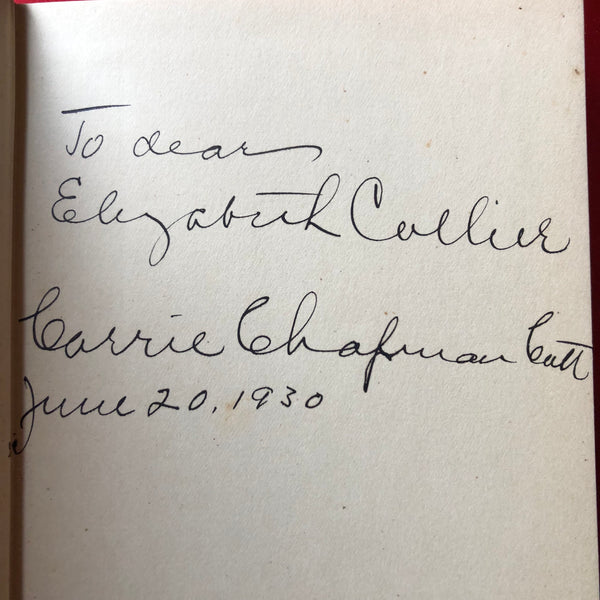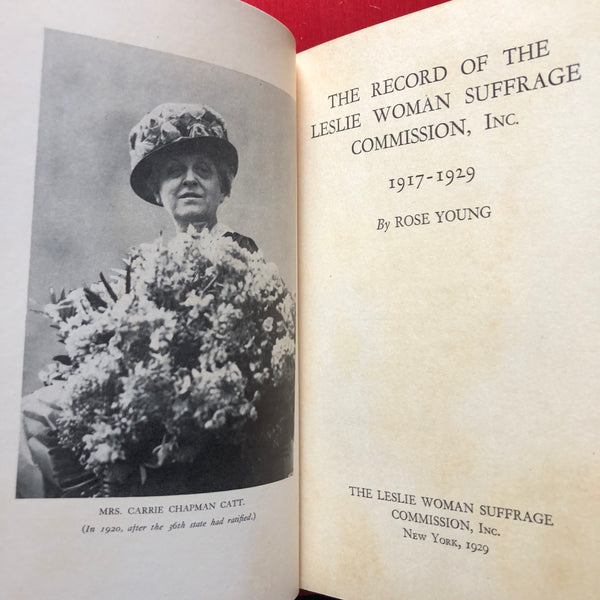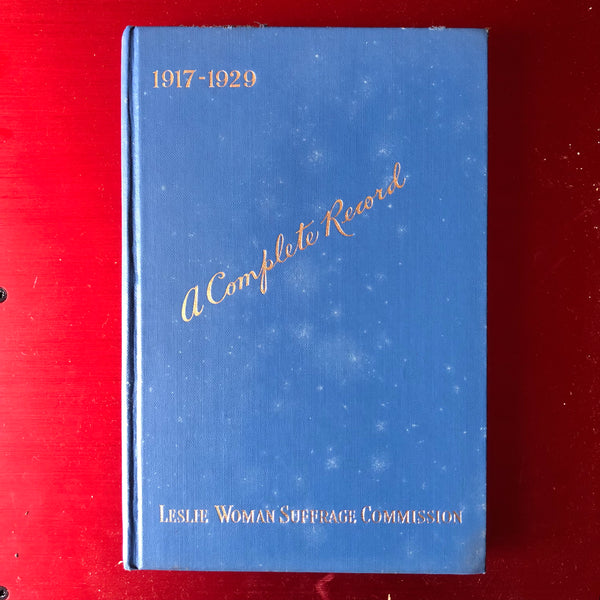Women's Suffrage
[Women's Suffrage]. Young, Rose. The Record of the Leslie Woman Suffrage Commission, Inc.1917-1929. New York: Leslie Woman Suffrage Commission, 1929. Octavo. Illustrated. Original blue cloth gilt. Light spots to cover, withal a fine bright copy in original glassine which is chipped.
First edition, an important association copy, inscribed "To Dear Elizabeth Collier Carrie Chapman Catt June 20th, 1930" . Frank Leslie,a woman who adopted her deceased husband's name upon his death, bequeathed nearly her entire estate to Carrie Chapman Catt, this volume primarily recounts the ensuing pillaging of the estate by various parties... essentially taking half the proceeds, nonetheless a substantial amount remained and funded Ms. Catt's continued activism for women's suffrage.Carrie Chapman Catt (January 9, 1859 – March 9, 1947) was an American women's suffrage leader who campaigned for the Nineteenth Amendment to the United States Constitution, which gave U.S. women the right to vote in 1920. Catt served as president of the National American Woman Suffrage Association and was the founder of the League of Women Voters and the International Alliance of Women. She "led an army of voteless women in 1919 to pressure Congress to pass the constitutional amendment giving them the right to vote and convinced state legislatures to ratify it in 1920" and "was one of the best-known women in the United States in the first half of the twentieth century and was on all lists of famous American women" . Catt is a controversial figure present day, in her advocacy for achieving enfranchisement of women she often appealed to white supremacy by suggesting that white women would vote in higher numbers thereby furthering the interests of whites in elections, though statements made by her in other contexts might indicate she used the argument as a pragmatic approach to achieving ratification in Southern States. Students at Iowa State University along with the NAACP protested to change the name of Catt Hall unsuccessfully in the late 1990's. Though widely held institutionally, this book is scarce in commerce. (#kfk904)









